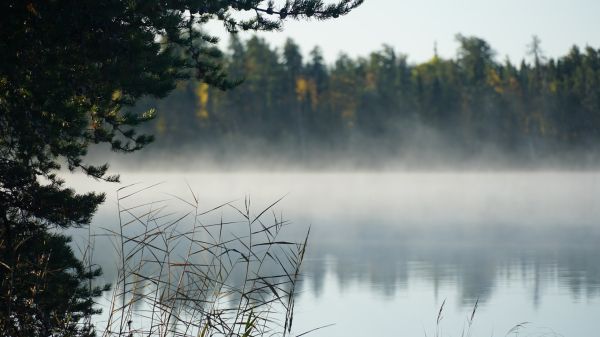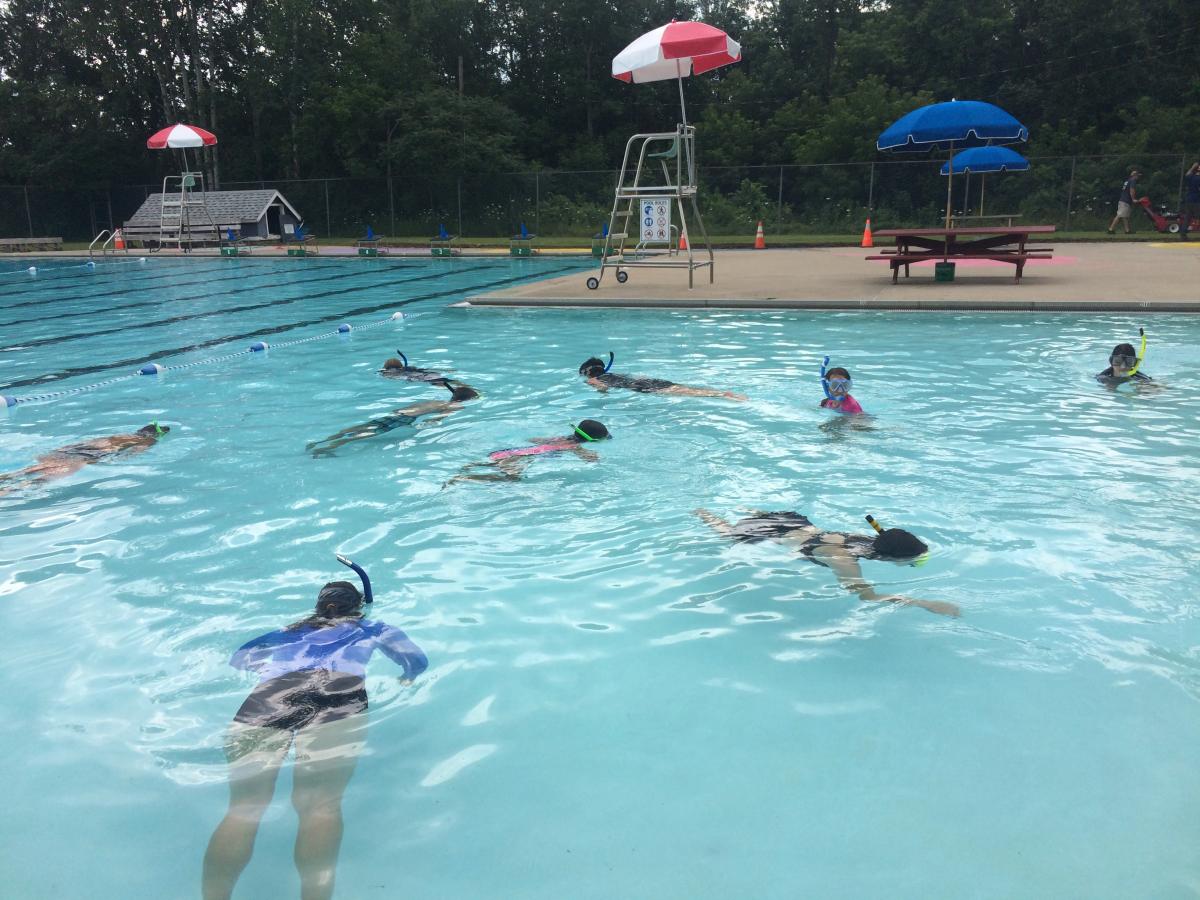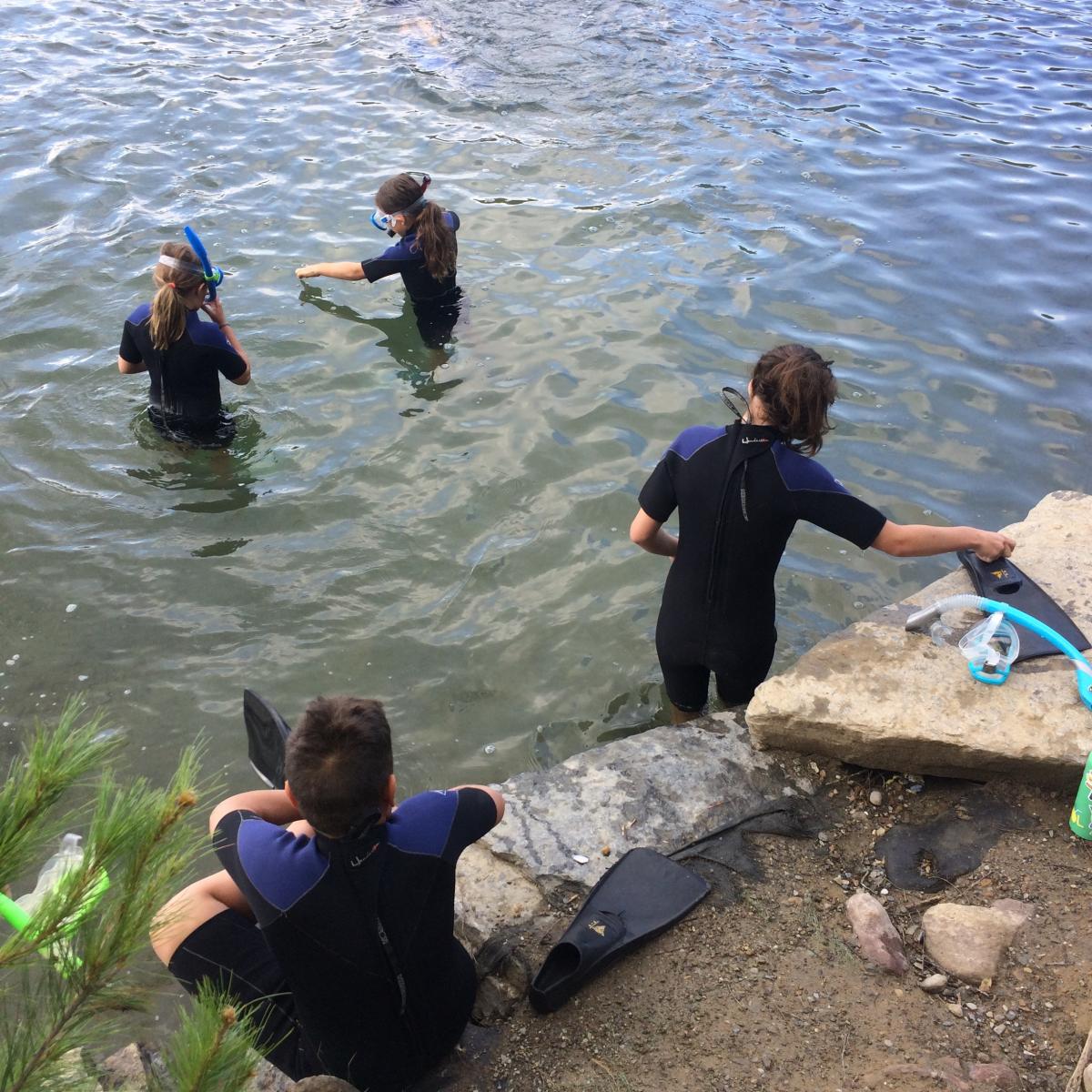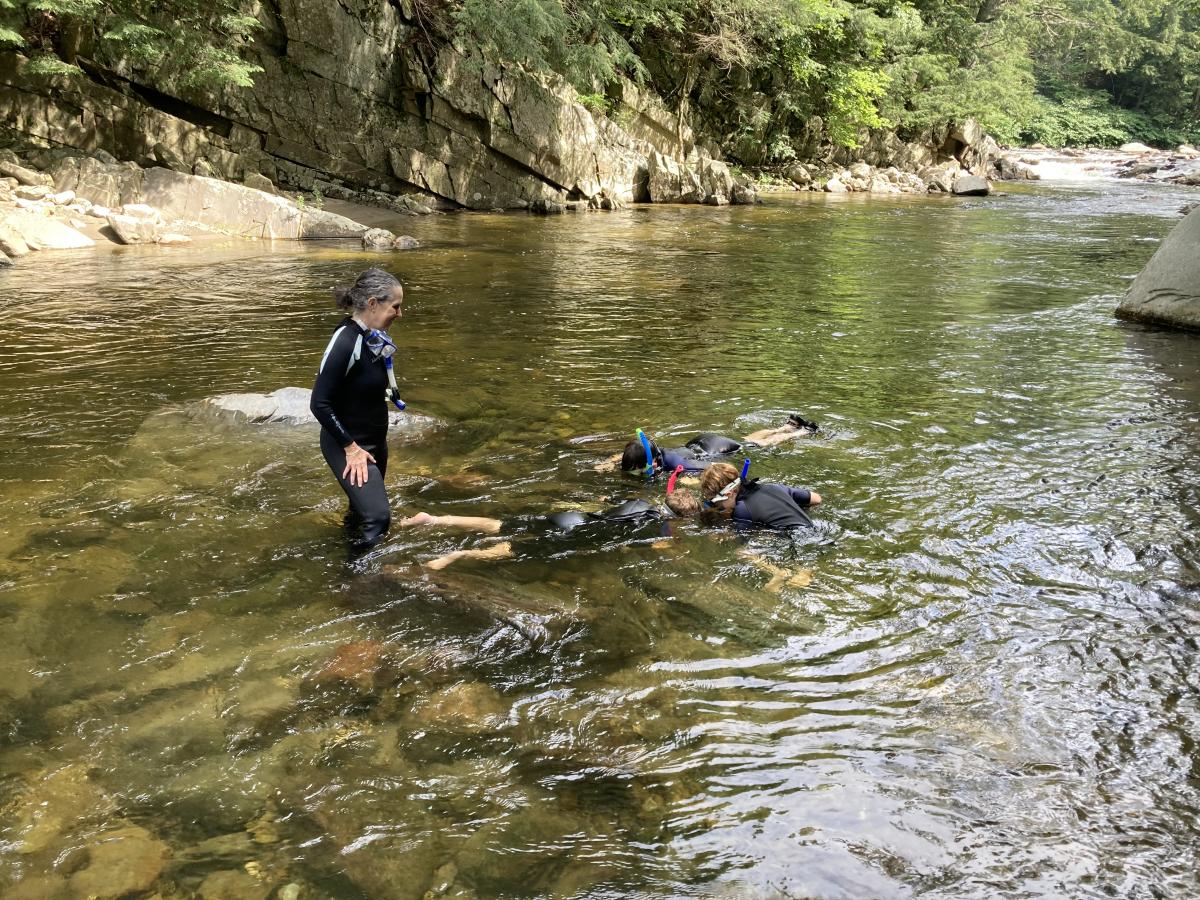Underwater Explorers Snorkel the Lake Champlain Watershed

eeBLUE: Watershed Chronicles
This post was written by Susan McClure, executive director of Lake Champlain Maritime Museum.

Over the past 2 years, Lake Champlain Maritime Museum, located on the shores of Lake Champlain in rural Vermont, has worked with two 21st CCLC sites and Lake Champlain Sea Grant educators to create a unique program combining snorkeling skills and watershed learning. The goal of the project is to inspire students to become lake stewards in our community. As we wrap up the final season of the project, and send kids to field sites for the final visits, we are reflecting on the challenges, successes, and what comes next.
Through this project, we have had the opportunity to connect with amazing informal educators who are so dedicated to creating in-water and hands-on science learning experiences with students in our community. The teachers-school-parent-museum relationships that have been built through this program will continue to serve the community for years to come. While we have had great experiences working directly with staff and educators at CCLC sites, we have also found that the success of these programs is often directly linked to the passion of the educators. As the museum, doing our part to inspire that passion will keep these educators teaching watershed education into the future. However, because the programs are so linked directly with individuals, we run the risk of not continuing the program if the talented staff member can’t participate or has to leave the position. We had great support from the CCLC partners, but it really did come down to individual teachers who were passionate about the topic going the extra mile to create meaningful experiences for students.

Another challenge we experienced is one that all schools, students, and communities are experiencing as we work to recover from the pandemic: teachers are stretched thin, parents are tired, and kids are in uncharted waters. Every step along the way with Underwater Explorers was impacted by unexpected challenges due to the COVID pandemic, from scheduling to delays in shipping supplies to teacher availability and more. While this was hard, it did help us to focus on what was most important: creating meaningful experiences with students that gave them the opportunity to see new possibilities, connect with their environment, and find peace in the water during this challenging time.
And of course, the very best part of this program has been the reaction of the students to these amazing in-water experiences. Seeing a student come up from the water with wide eyes after seeing underwater for the first time is an experience neither the museum staff, the 21st CCLC educators, nor the student will ever forget.

The Museum is looking forward to supporting our 21st CCLC partners to continue running their own programming with students after this NAAEE funding ends. The schools are well-supplied and key educators are trained and ready to continue snorkeling with students. Our team is also going to be launching an Underwater Explorers Snorkeling Summer Camp in 2023. All of our summer camp programs are pay-what-you-can, and we’ll be reaching out to our committed Underwater Explorer students to register them for our summer camp programs. Snorkeling gets kids excited about exploring our watershed, and we want to continue building that relationship between the students and the water for years to come.
The NOAA Office of Education and NAAEE partnered to increase environmental and science literacy among NOAA’s partners and external networks. In this five-year partnership supported by the U.S. Department of Education, NOAA and NAAEE worked together to provide enriching after-school watershed-related STEM (science, technology, engineering, and mathematics) projects through NOAA-21st Century Community Learning Centers Watershed STEM Education Partnership grants. These grants supported programming for a total of 100 local 21st Century Community Learning Centers (21st CCLC) sites and their students. The 30 selected projects served 18 states, ranging from Alaska to Florida.


